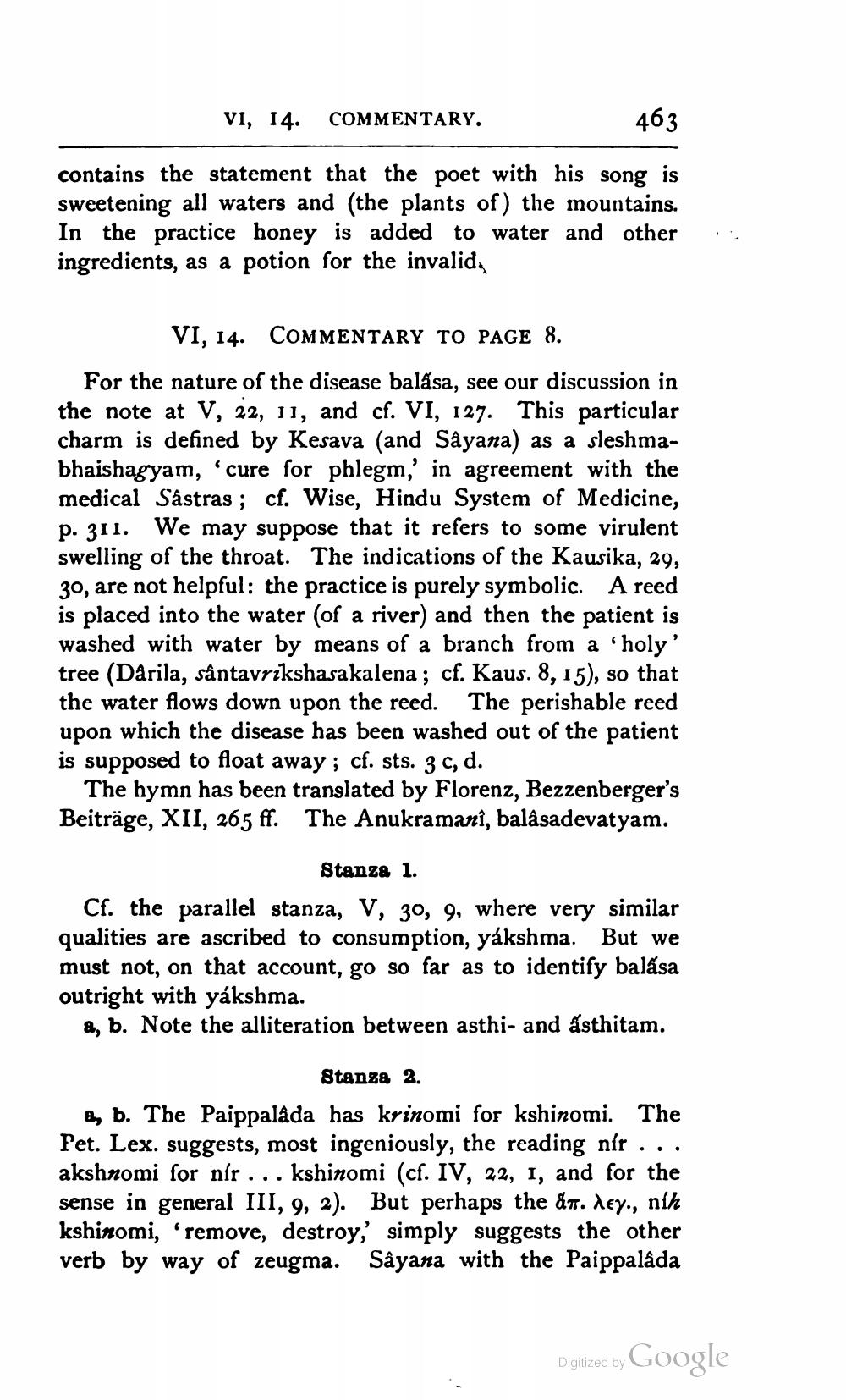________________
VI, 14. COMMENTARY.
463
contains the statement that the poet with his song is sweetening all waters and (the plants of) the mountains. In the practice honey is added to water and other ingredients, as a potion for the invalida
.
VI, 14. COMMENTARY TO PAGE 8. For the nature of the disease balása, see our discussion in the note at V, 22, 11, and cf. VI, 127. This particular charm is defined by Kesava (and Såyana) as a sleshmabhaishagyam, 'cure for phlegm,' in agreement with the medical Sastras ; cf. Wise, Hindu System of Medicine, p. 311. We may suppose that it refers to some virulent swelling of the throat. The indications of the Kausika, 29, 30, are not helpful: the practice is purely symbolic. A reed is placed into the water (of a river) and then the patient is washed with water by means of a branch from a "holy' tree (Darila, sântavrikshasakalena ; cf. Kaus. 8, 15), so that the water flows down upon the reed. The perishable reed upon which the disease has been washed out of the patient is supposed to float away ; cf. sts. 3 c, d.
The hymn has been translated by Florenz, Bezzenberger's Beiträge, XII, 265 ff. The Anukramani, balasadevatyam.
Stanza 1. Cf. the parallel stanza, V, 30, 9, where very similar qualities are ascribed to consumption, yakshma. But we must not, on that account, go so far as to identify balása outright with yákshma.
&, b. Note the alliteration between asthi- and asthitam.
Stanza 2. 2, b. The Paippalada has krinomi for kshinomi. The Pet. Lex. suggests, most ingeniously, the reading nir ... akshnomi for nir ... kshinomi (cf. IV, 22, I, and for the sense in general III, 9, 2). But perhaps the dr. dey., nih kshinomi, 'remove, destroy, simply suggests the other verb by way of zeugma. Sâyana with the Paippalada
Digitized by Google




